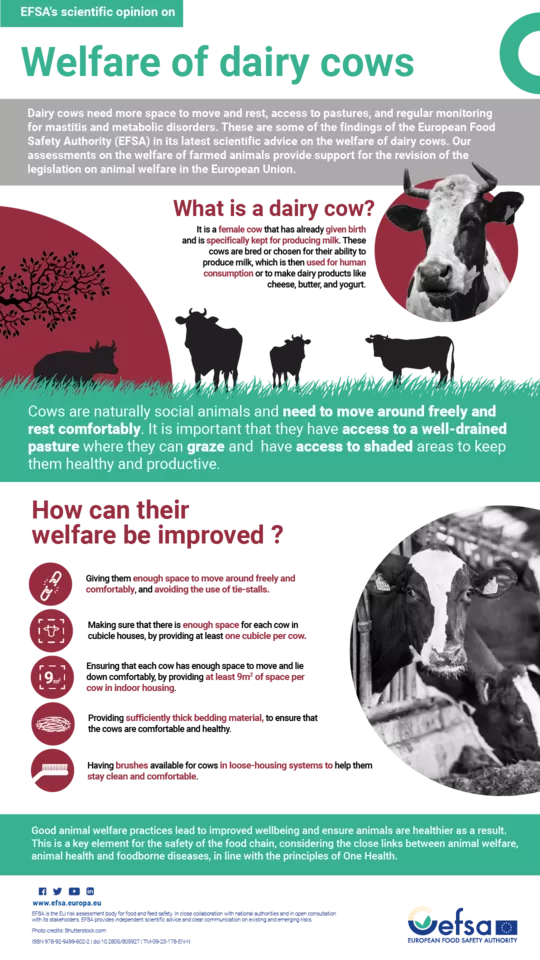Welfare of dairy cows


Dairy cows need more space to move and rest, access to pastures, and regular monitoring for mastitis and metabolic disorders. These are some of the findings of the European Food Safety Authority (EFSA) in its latest scientific advice on the welfare of dairy cows. Our assessments on the welfare of farmed animals provide support for the revision of the legislation on animal welfare in the European Union.
What is a dairy cow?
It is a female cow that has already given birth and is specifically kept for producing milk. These cows are bred or chosen for their ability to produce milk, which is then used for human consumption or to make dairy products like cheese, butter, and yogurt.
Cows are naturally social animals and need to move around freely and rest comfortably. It is important that they have access to a well-drained pasture where they can graze and have access to shaded areas to keep them healthy and productive.
How can their welfare be improved?
- Giving them enough space to move around freely and comfortably, and avoiding the use of tie-stalls.
- Making sure that there is enough space for each cow in cubicle houses, by providing at least one cubicle per cow.
- Ensuring that each cow has enough space to move and lie down comfortably, by providing at least 9m2 of space per cow in indoor housing.
- Providing sufficiently thick bedding material, to ensure that the cows are comfortable and healthy.
- Having brushes available for cows in loose-housing systems to help them stay clean and comfortable.
Good animal welfare practices lead to improved wellbeing and ensure animals are healthier as a result. This is a key element for the safety of the food chain, considering the close links between animal welfare, animal health and foodborne diseases, in line with the principles of One Health.